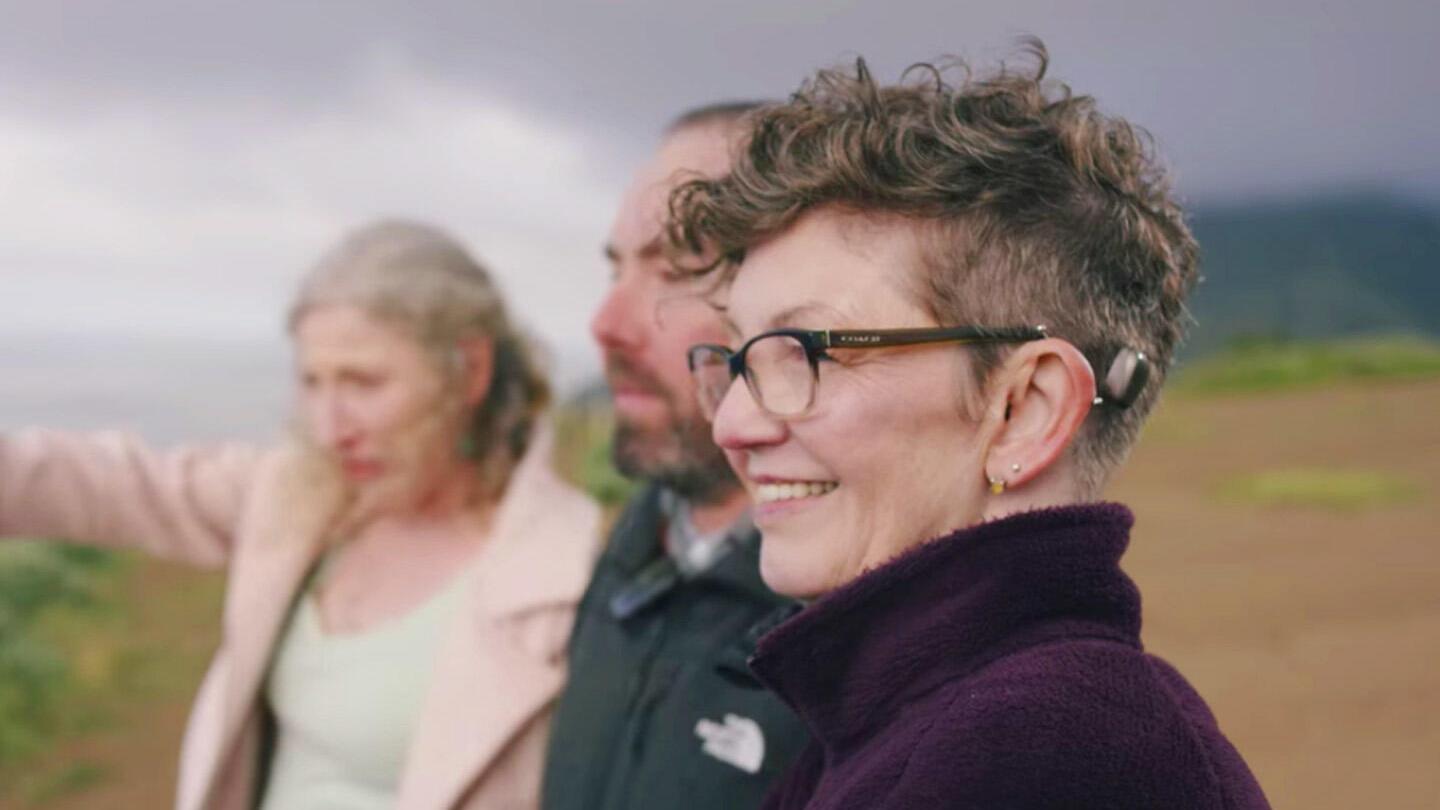Active OS implants
Learn more about how active osseointegrated steady-state implants work and how they may improve your hearing.

What you'll find on this page
- How osseointegrated steady-state implants work
- The main components of a Cochlear™ Osia® System
- The benefits of active OS implants
The Cochlear™ Osia® System, the world’s first and only active osseointegrated steady-state implant (OSI) system, uses digital piezoelectric stimulation to send sound directly to the cochlea. It can help those with conductive or mixed hearing loss or single-sided deafness by using bone conduction technology that has not been used for this type of system before - piezoelectric stimulation. The advantages of piezoelectric stimulation include enhanced durability and improved hearing at high-frequencies that are critical for understanding speech.
How does an active OS implant work?
Active osseointegrated steady-state implants (OS implants) use the principle of bone conduction to bypass the damaged or missing parts of the outer or middle ear. However, unlike traditional bone conduction solutions, OS implants deliver the sound vibrations using digital piezoelectric stimulation through the transducer (the part that creates vibrations) located completely under the skin.
An active OS implant system includes the following main components:
- External sound processor that captures sound in the air - the Osia® 2 Sound Processor is lightweight, durable and features state-of-the-art connectivity technology.
- Internal implant that is placed under the skin and includes our Piezo Power™ transducer that is designed to deliver long-term performance and durability.1
Together, these components bypass the part of the ear that isn't working and send vibrations to the inner ear where they are sent to the brain and interpreted as sound.
How the Osia System Works
Will you benefit from an active OS implant?
Research has shown that an active osseointegrated steady-state implant may help you or a loved one:2-5
- Improve your understanding of speech in quiet and in noisy environments
- Hear better, even in noise
- Enjoy improved sound quality (compared to hearing aids) by bypassing the damaged part of the ear to reduce the amount of amplification needed to hear better
Try a bone conduction solution, then decide
You have the opportunity to try a Cochlear™ bone conduction solution before deciding whether to get an implant. Make an appointment with a Hearing Implant Specialist and they will be able to advise you if you may benefit from a bone conduction solution. Find one today.
Find a Hearing Implant Specialist near you
Disclaimer
Please seek advice from your health professional about treatments for hearing loss. Outcomes may vary, and your health professional will advise you about the factors which could affect your outcome. Always read the instructions for use. Not all products are available in all countries. Please contact your local Cochlear representative for product information.
Views expressed are those of the individual. Consult your health professional to determine if you are a candidate for Cochlear technology.
For a full list of Cochlear’s trademarks, please visit our Terms of Use page.
In the United States and Canada, the placement of a bone anchored implant is contraindicated in children below the age of five. In the United States and Canada, the Osia System is cleared for children ages five and older.
References
- Dotevall M. Osia OSI200 Implant Technical Brief. Cochlear Bone Anchored Solutions AB, Swweden. 2020; D1602089.
- Lau K, Scotta G, Wright K, Proctor V, Greenwood L, Dawoud M, Ray J. First United Kingdom experience of the novel Osia active transcutaneous piezoelectric bone conduction implant. Eur Arch Otorhinolaryngol. 2020;140(3):212-219.
- Mylanus EAM, Hua H, Wigren S, et al. Multicenter Clinical Investigation of a New Active Osseointegrated Steady-State Implant System. Otol Nueroltol. 2020;41(9):1249-1257.
- Goycoolea M, Ribalta G, Tocornal F, et al. Clinical performance of the Osia™ system, a new active osseointegrated implant system. Results from a prospective clinical investigation. Acta Otolaryngol. 2020;140(3):212-219.
- de Wolf MJ, Hendrix S, Cremers CW, Snik AF. Better performance with bone-anchored hearing aid than acostic devices in patients with severe air-bone gap. Laryngoscope. 2011;121(3):613-6.



